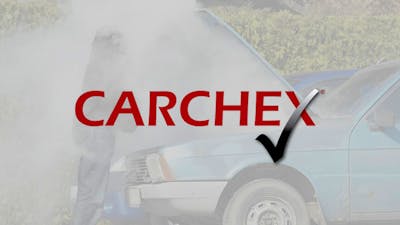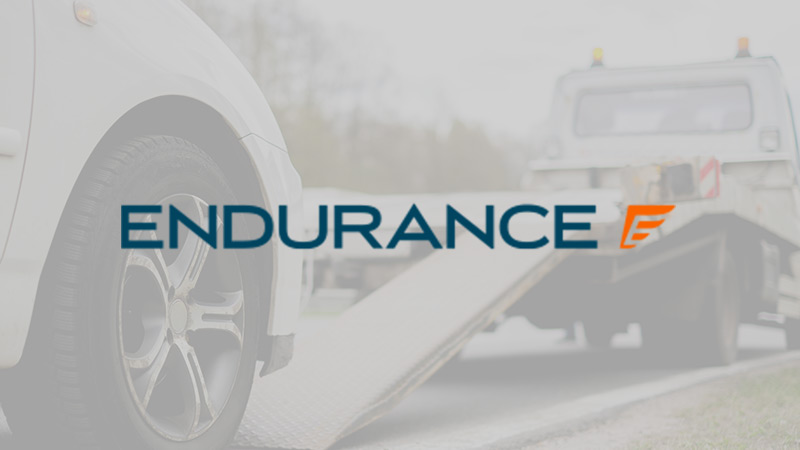How Much Does it Cost to Replace a Windshield
One of the most common repairs needed on any vehicle is a windshield replacement. Windshields break at an alarming rate for some of us, and for others, it almost never happens. One’s particular commute, whether or not the roads are sanded and salted in the area, severe weather events and even the vehicle’s windshield design can all be factors.
Popular Warranty Providers
One thing is for sure, everything is getting more expensive, and the first thing folks think when they see the dreaded bullseye or spider web crack is, “How much is this gonna cost me?"
Your Windshield Is Broken - What Now?
If you've ever been happily driving along and a stone is kicked up by a vehicle ahead of you, a small ding or chip may occur. That chip might expand to a small crack. If you are lucky, the damage may stop right there and not progress further. If the damage is localized, and if it is not directly in your line of sight, you can likely live with the imperfection or have it repaired.
Some states inspect vehicles annually as part of their mandated safety programs. Windshields are often included among the many things that the inspectors will look over. Rules of thumb vary, and the inspector may also have some leeway. Cracks from as small as the diameter of a dime, to those as long as a few inches may still pass. Or not. Check with your state’s regulations to be sure what the standard is. One inch is a common standard at which point the inspector will fail the car.
Will Insurance Cover My Windshield Repair Costs?
Your insurance policy may include glass repair or replacement. If so, you may wish to have the damage repaired if your insurance will cover the cost. Here you need to consult your insurance provider to find out what your options are. Generally speaking, insurance companies will want you to repair a damaged windshield if it can be fixed, rather than replace it entirely.
You may have the opposite opinion, particularly if your windshield is old and has many micro-pits. Communicate with your insurance provider. A replacement may be possible if you request it.
Some states mandate that insurance cover glass unless a driver opts out of the plan. Our home state of Massachusetts is one such state. Before you call for your windshield to be replaced, check with your insurance provider. They may also have a list of local service providers who can help you.
How Much Does It Cost To Replace a Windshield?
Most windshield replacement jobs including labor and parts cost between $300 to $600. This is for vehicles that are mainstream, meaning there are a lot of them around, and without any special features or special needs.
Some modern vehicle owners, such as those with Tesla vehicles, routinely report on social media group clubs that the cost is well over $1,000 for the job. Volkswagen ID.4 owners have reported costs over $1,500 including the necessary dealer calibration of the windshield-mounted sensors. Other owners report that the full cost including the recalibration is just under $1,000. As with all things auto-related, your price may vary.
| Vehicle | Year | Windshield Replacement Cost | Source |
|---|
You can find an estimate for your windshield replacement online at Safelite Auto Glass’s website.
What About Active Safety Sensor Adjustments?
Active safety sensors are now found in all new vehicles and have been rolling out for more than a decade. If your car is less than ten years old, the chances are that you have a windshield-mounted sensor array that helps keep you and others safe. The sensors are typically behind the glass at the center top and look through the windshield. Some manufacturers require that the sensors be recalibrated following glass replacement. Others do not. Check with your dealer or consult your owner’s manual to see if your vehicle requires this additional step.
Can My Windshield Be Repaired?
The windshield repair and replacement industry seem convinced that they can usually repair your broken windshield. The location, depth of the damage, and the length of its expanse will be the determining factors. If the crack is within the sweep of the driver’s-side windshield wiper, a repair is unlikely. If the damage extends to the edge of the windshield, a repair is unlikely as well.
The repair methods involve injecting glass resin into the crack or pit to help stop the damage from getting worse and will also help visually. Repairs are less costly than a full replacement.
Can You Get A Windshield In This Era of Shortages?
Over the past three years, vehicle component shortages have made routine repairs tricky. Shortages of glass windshields are now fairly common. The shortages may be longer if you have a low-volume vehicle such as an electric vehicle. Even made-in-America Tesla, the leader in EVs, has had difficulty keeping up with demand for windshields. Those who are early adopters of an entirely new model may have the longest wait times. If your first choice of a provider does not have a windshield, try other companies and even your dealer as a last resort.
Who Can Replace My Windshield?
Glass companies specializing in auto glass are almost always the go-to service providers when your glass breaks. Most will visit you at home or at work and perform the needed repair if the weather cooperates. Most also have local shops in which they can assist you. Normally your mechanic is not your windshield replacement professional.
Dealers can also repair and replace glass, but for the most part, they subcontract the work. If you opt to have your windshield replaced by a dealer don’t be surprised if you see the glass van depart as you arrive to pick up your car.
Can My Special Windshield Be Properly Replaced?
If your windshield has factory-specific tint along the top or has a heating element or other special feature, alert your glass repair professional. They will likely already know what you need if they've run your VIN, but it’s best to make sure they know you have the options. Yes, they can hook up the heating elements, and yes, the replacement glass can certainly mimic the factory glass with regard to tint. Every windshield technician can also put your rear-view mirror back on as well.
How Long Will Getting My Windshield Replaced Take?
Windshield replacement is relatively quick. Not counting the lead time for parts, you may be able to get your replacement done the next day, or within a few working days. The job itself is usually completed in about two hours. Following the replacement, you can drive the vehicle in dry weather and you will be given instructions on how long until your car will be weather-proof. Usually, it is overnight.





















